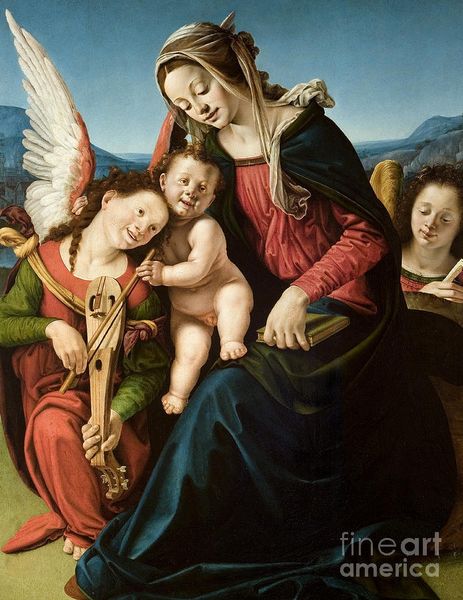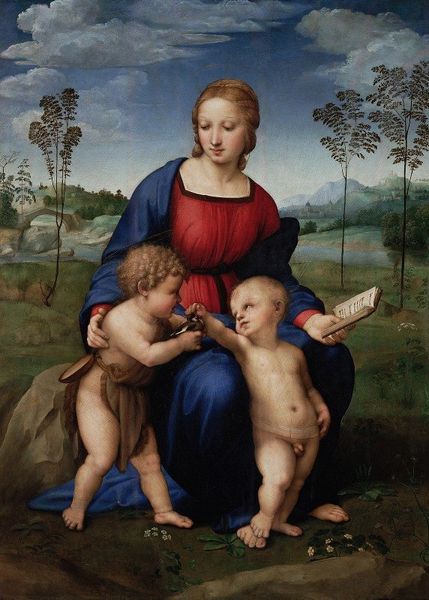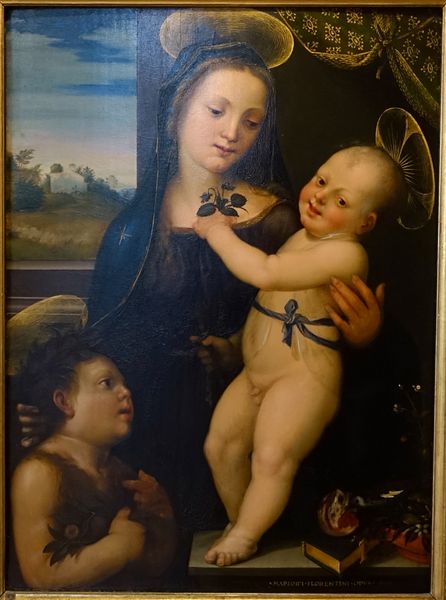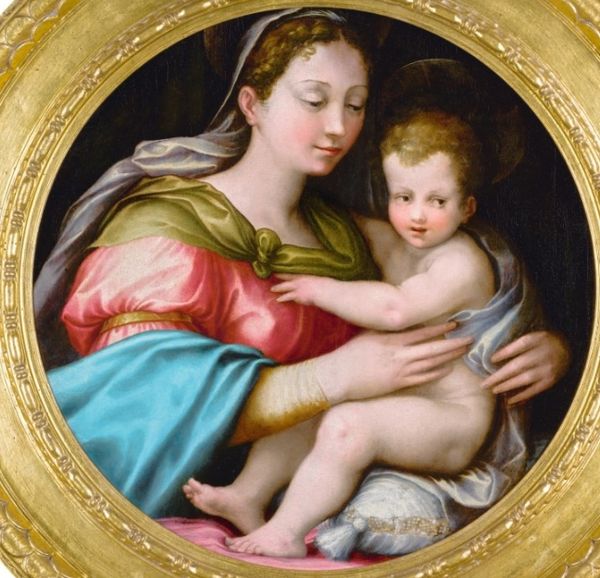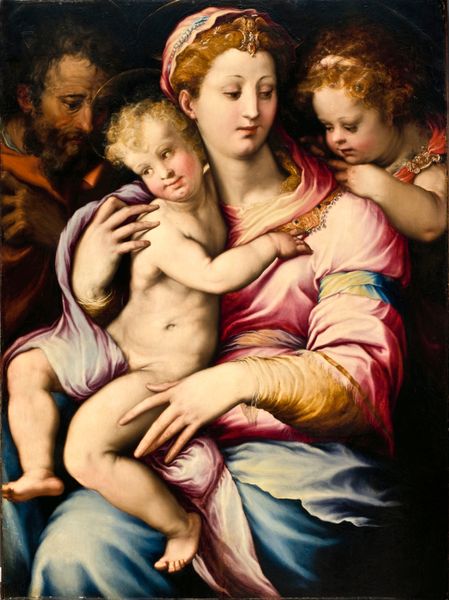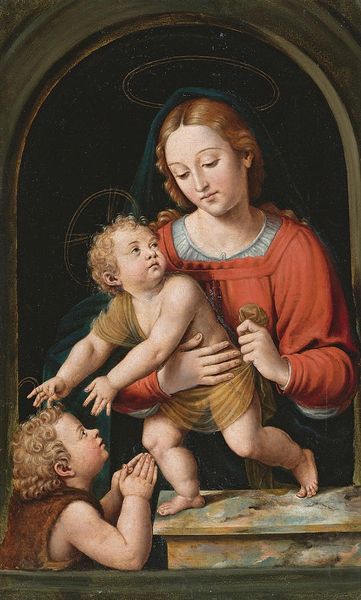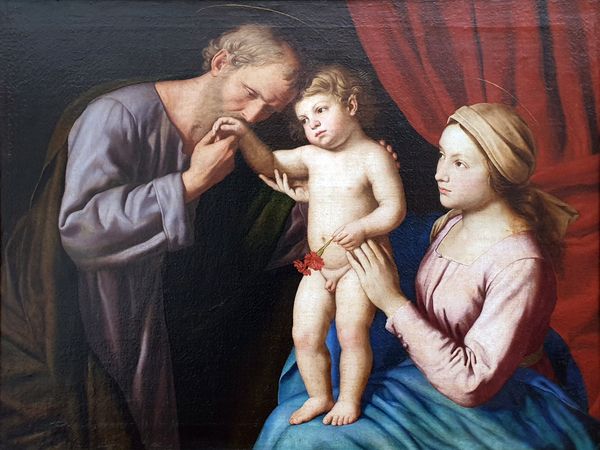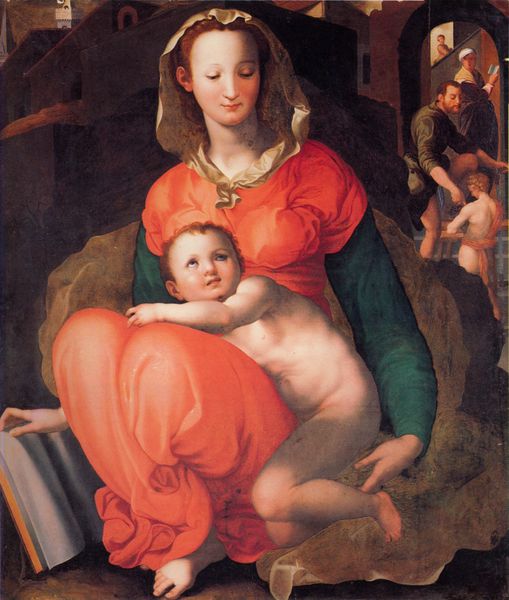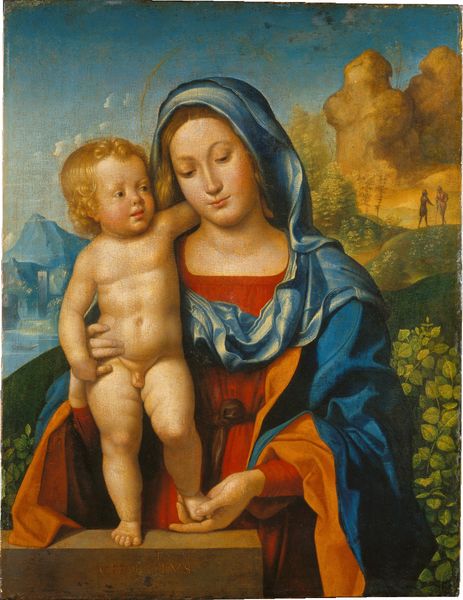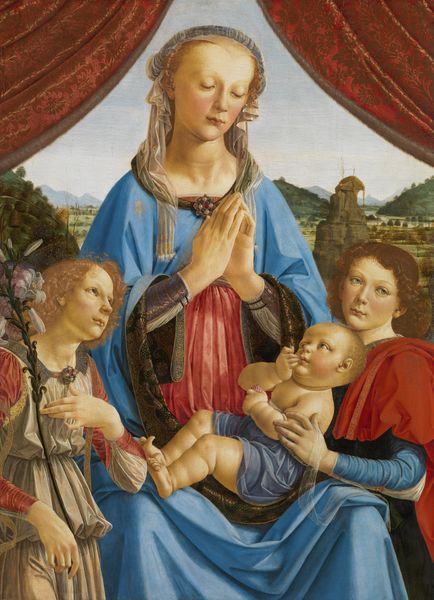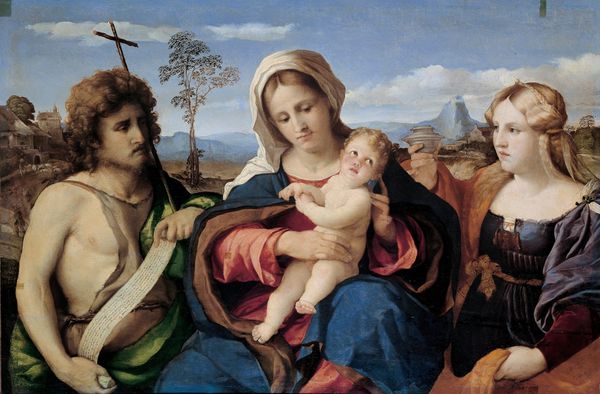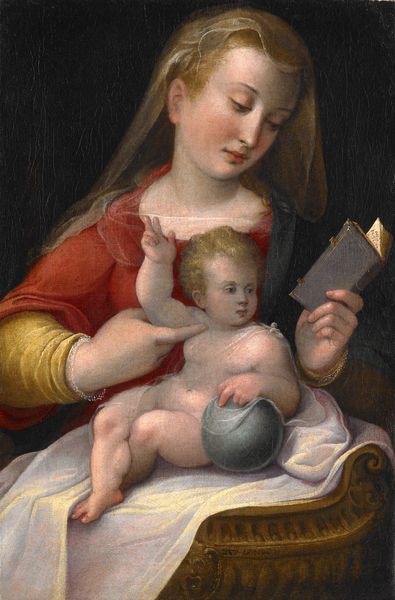
painting, oil-paint
#
portrait
#
baroque
#
painting
#
oil-paint
#
figuration
#
oil painting
#
history-painting
#
italian-renaissance
Copyright: Public domain
Curator: Sassoferrato's "Madonna and Child," likely painted around 1650, is an exquisite oil painting, a tender portrait that invites reflection. Editor: The sheer smoothness of it strikes me first. Like porcelain skin and meticulously draped fabric. You can almost feel the texture wanting to escape the confines of the medium. Curator: He certainly possessed a mastery of the brush, didn't he? I often wonder what those pigments were, ground by hand, layer upon painstaking layer to achieve this effect. Did the artist have his workshop or did his patron have the best material to do the paint and brushworks, what was the life of an artist such as he? It definitely breathes that certain...stillness. Editor: A stillness carefully constructed. Notice the ultramarine of the Virgin's robe, the source coming possibly from lapis lazuli that travelled from mines far away! Or how meticulously the light plays on the folds of the red shawl. Sassoferrato knew how to make the materials speak wealth, reverence, and perhaps a desire for something...unattainable? Curator: Unattainable, perhaps. It's in her eyes, don't you think? A kind of placid resignation that’s as universal now as it must have been then. Consider the model, her place in Sassoferrato's time, perhaps caught in domestic labour and maybe fantasising about freedom. And that gentle curve of her neck, the way the light falls just there, whispering volumes... Editor: Agreed. We often detach such Madonnas from labor, the daily toil that afforded such works. The raw linseed oil used as a binder, the source of his brushes, how meticulously the workshop functioned, how gendered the divisions of labour! It is critical. And yes, the painting itself…the brushwork hides much, doesn’t it? All those hands involved are seemingly erased beneath the smooth veneer of a “masterpiece.” Curator: Erased, but not forgotten. The canvas breathes, whispers secrets that we glimpse still in every carefully laid brushstroke. It's not just looking at an image but at the possibility of an idea and maybe, just maybe, the echoes of a lost moment in time. Editor: Indeed, we trace echoes of labor and materiality interwoven, perhaps even buried within that very pursuit of beauty. It makes you rethink "Madonna and Child" doesn't it?
Comments
No comments
Be the first to comment and join the conversation on the ultimate creative platform.
